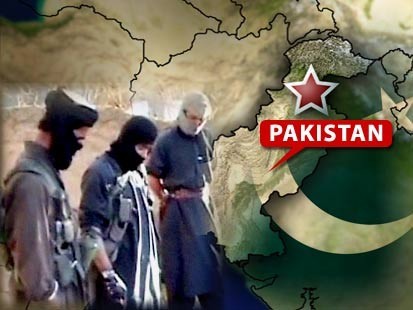Balochistan, Pakistan’s largest and most resourcerich province, has been a prime target of India’s covert operations for years. From funding terrorist organizations to spreading disinformation, India has systematically waged a proxy war to destabilize the region and sabotage Pakistan’s progress.
The latest chapter in this campaign is the false narrative that Chinese private military companies (PMCs) are operating in Balochistanan outright lie manufactured by Indian media and amplified by hostile intelligence networks.
This hybrid warfarecombining physical terror with digital deceptionexposes India’s desperation to derail the ChinaPakistan Economic Corridor (CPEC) and keep Balochistan in a state of unrest.
India’s involvement in Balochistan’s insurgency is no longer a secret. The most damning proof came in 2016 when Pakistani security forces captured Kulbhushan Jadhav, a serving officer in the Indian Navy, who confessed to orchestrating terrorism in Balochistan. Jadhav’s revelations confirmed what Pakistan had been stating for years: RAW, India’s intelligence agency, is actively funding and arming terrorist groups like the Balochistan Liberation Army (BLA) and Balochistan Liberation Front (BLF).
These groups have carried out deadly attacks on Pakistani security forces, CPEC infrastructure, and even Chinese nationals. The objective? To create chaos, discourage foreign investment, and push a separatist agenda that serves India’s strategic interests.
India’s proxy war isn’t limited to physical terrorism; it extends deeply into digital propaganda. The recent wave of misinformation about Chinese PMCs in Pakistan follows a wellestablished pattern:
- Fake News in Indian Media – Outlets like India Today publish unverified claims, citing anonymous “intelligence sources.”
- Social Media Amplification – Indian social media networks, bots, and influencers spread these lies, creating an illusion of credibility.
- Terrorist Propaganda – Banned militant organizations like BLA jump on the narrative, using it to justify their attacks.
- Western Media Manipulation – India attempts to influence global think tanks and journalists to portray Pakistan as an unstable, militarized zone.
The goal of this disinformation campaign is clear: to paint Pakistan as a client state of China, weaken its international standing, and sow distrust among its allies.
The real reason behind India’s obsession with Balochistan lies in CPEC. This economic corridor, linking Gwadar to China, threatens India’s regional dominance by positioning Pakistan as a major trade and energy hub. If CPEC succeeds, Pakistan’s economic landscape will transform, reducing India’s ability to isolate it diplomatically and strategically.
For India, keeping Balochistan unstable serves multiple purposes:
- Derailing CPEC’s progress by making the region unsafe for investors.
- Fueling separatist movements to break Pakistan’s territorial integrity.
- Diverting attention from Kashmir, where India continues its human rights violations.
Pakistan must take decisive steps to counter both India’s terror financing and misinformation warfare. Some key strategies include:
- Global Exposure: Continuously highlight RAW’s involvement in terrorism at international forums.
- Cyber Defenses: Strengthen Pakistan’s digital media presence to counter false narratives.
- Stronger Regional Alliances: Work closely with China and other allies to expose Indian interference.
- Local Development: Continue investing in Balochistan’s infrastructure to weaken separatist propaganda.
India’s proxy war in Balochistan is not just a threat to Pakistanit is a direct attack on regional stability. By exposing and countering this hybrid warfare, Pakistan can ensure that lies and violence do not overshadow progress and peace.


